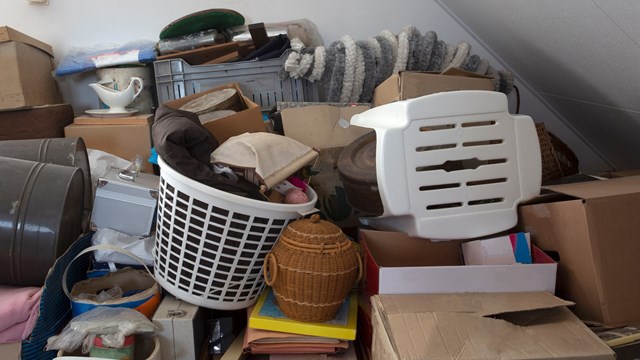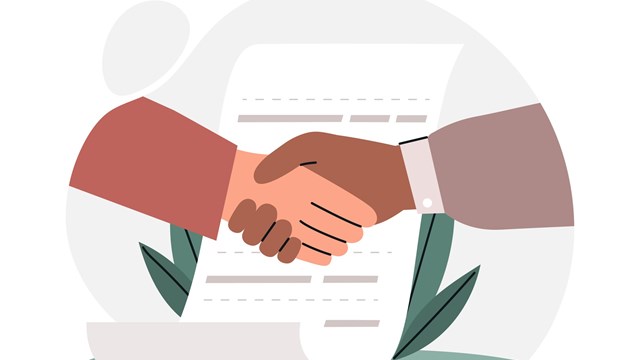They're inside your favorite restaurant and out in the streets. They stand inside doorways and behind desks. They're up in the sky and far below ground level. They're everywhere. From the classic diner waitress apron to the busboy's jacket to the bellboy's hat, uniforms help us recognize people and positions in our world. They define status, help us find people who can offer assistance in service or emergency situations and they provide (you guessed it) visual uniformity to a group of people with the same goals and purpose. Uniforms are used for a reason - they work.
There are many reasons why a co-op or condo's board and residents might want their building's staff to be in uniform. Outfitting your front desk staff in denim jeans and T-shirts just won't convey an appropriate message. Uniforms identify specific tasks and roles, i.e., a doorman, a maid, a building superintendent, a security guard, a concierge or a valet. A doorman decked out in a brightly-colored tailored uniform, for example, is instantly recognizable, projects a professional image, and provides an appearance of decorum and a level of security that a non-uniformed person does not.
So what does it mean to outfit your staff in uniforms? Since we realize now how important it is, what steps does one take to achieve that polished, professional look of a clean-cut, uniformed staff? How much does it cost per person? How long do uniforms last? There are a lot of questions that spring to mind because outfitting your staff is an involved process. It isn't difficult, per se, but it might take more thought than you realize.
Stuart Busch of I. Buss Uniforms and Allan Costumes helped shed some light on the topic. This New York-based company has been around since 1892, serving the needs of hundreds of buildings and building owners. Busch has been in the business personally for 50 years and knows a thing or two about dressing a building staff - over 50 percent of I. Buss' business is with residential and commercial real estate. While I. Buss primarily sells the uniforms they stock, their partner company, Allan Costumes, rents most of their goods. Busch said that the vast majority of the customers who are interested in uniforms actually purchase them instead of opting to pay a rental charge. So how much does it cost to buy a uniform?
"Most buildings will buy a few different styles," says Busch, "to fit the season they're in." You wouldn't want your staff to be cold in the winter or hot in the summer - that would cut down on productivity and simply wouldn't be very practical or very nice. The typical fall and winter uniform for a doorman includes a shirt, jacket and tailored pant and oftentimes a hat. In the warmer months, however, a nicely pressed aviator shirt can take the place of the jacket/shirt combo. So already, you'll need to consider a couple different variations on the uniform for just one staff member.
Of course, few businesses will make do with just one of each of these items. "We usually sell at least two of each item for every employee for maintenance purposes," says Busch. You wouldn't want to give your doorman just one pair of pants - when would he have time to wash them? "If you estimate that a jacket costs $350, a hat is $55, five shirts come out to about $100 total and then a few ties here and there, you're going to be looking at anywhere from $550 to $1,000 per employee. An overcoat these days comes in around $400." Now, that seems like a lot of money - it certainly isn't cheap - but Busch says the average shelf life of a uniform is two years. So, over time, it doesn't end up costing too much more than $20 a week to clothe your employees in spiffy looking uniforms.
Of course, what style of uniform you get depends a great deal not only on the amount of money your building has to spend on the project, but on the look or mood you're trying to set for your building. A modest high-rise complex may be well served by putting their doormen and security personnel in pressed trousers and crisp white shirts and ties with a basic navy blazer, while a historic or luxury building might go all-out, suiting their doorman in a wool greatcoat with gold buttons, braiding, and epaulettes. Still other buildings might opt to put their front-of-house staff in smart black suits, to convey a mood of downtown hip and urbane suavity. In that regard, the uniformity of a building's staff is as subjective as buildings are unique.
According to Gerard Picaso, president of Gerard J. Picaso, Inc., a property management firm based in Manhattan, "Some buildings, when they re-do their lobby or interior, will replace or choose different colors for their staff uniforms. The designer of the lobby or hall is often involved in deciding on the front-of-house staff's "˜look.'"
Picaso continues, "You want the uniforms to compliment accoutrements of the building itself - when it comes time to update uniforms due to wear-and-tear, the uniform company will bring in swatches or even sample uniforms to present to the board for approval. The uniform company often will do fittings for staff members as well."
Of course, for every front-of-house staffer, there's a back-of-house, too, and while it costs a bit less to clothe your back-of-house staff, those uniforms are just as important. Janitors, maintenance workers, housekeeping and other service positions require uniforms for the same reason your up-front personnel needs them - primarily for security and identity purposes. However, support staff needs uniforms for another reason. Back-of-house employees often are dealing with harsh chemical products, grease cleaners, and detergents. Uniforms designed for these positions take safety concerns into mind.
So once you've decided on what style of uniform would best suit (no pun intended) your building and staff, it's important to remember that no matter how much you spend on one uniform, your cost may or may not end there.
What about maintenance? Is that included in the price of the uniform? Not always. Some companies include upkeep, like Primo Uniform in Brooklyn. Their pricing structure is a little different than I. Buss. Jack Ippolito has been in the uniform business for over 12 years as the owner and manager of Primo Uniform. Like I. Buss, over 60 percent of Primo's business is real estate-related. With Primo, however, a customer is much more likely to rent the uniforms - most of the selling that Primo does is to wholesalers and liquidators. They offer a three-year contract with each uniform and offer maintenance and sizing changes, the fee for which is included in their fee of $35 a week per staff member. Because the uniforms are still technically owned by Primo, assuming the responsibility for the cleaning and maintenance isn't a stretch for them. Once the uniform is purchased, however, it's up to the customer (no matter which company they're dealing with) to clean their own goods. Who ever heard of a department store paying your dry cleaning bill once you take home your new dress or suit? It makes sense that once it's paid for, it's yours to deal with forever.
So which is right for you? Should you buy or rent? It's hard to say. The best thing to do is visit at least three professional, accredited uniform businesses and talk to the proprietors about all your options. Sit down with a calculator and work out the math on all your choices, including cleaning, longevity, and upkeep and don't forget to include at least two pairs of every item for every employee. From the numbers you crunch and the general feel you get from each company, you should be able to make an educated decision about what uniforms to get and whether to rent or buy.
Though every company you choose to look into is going to have different pricing structures and different products, variety and quality, most companies share similar sentiments about the need for good looking uniforms in order to convey a professional look, secure a building, and boost staff morale. "Obviously, [uniforms] give your building an identity," says Busch. "They convey the building's aesthetic, its appearance."
Picaso agrees, and adds, "Unless you've done something silly - like choosing an uncomfortable or garish design - nine times out of ten, staff reacts favorably to uniforms. But if they don't fit or function well, it defeats the whole purpose; it's like if you ordered something from a catalog and it didn't fit - except that you can't just return uniforms. New uniforms nearly always appeal - the suit makes the man."







Comments
Leave a Comment